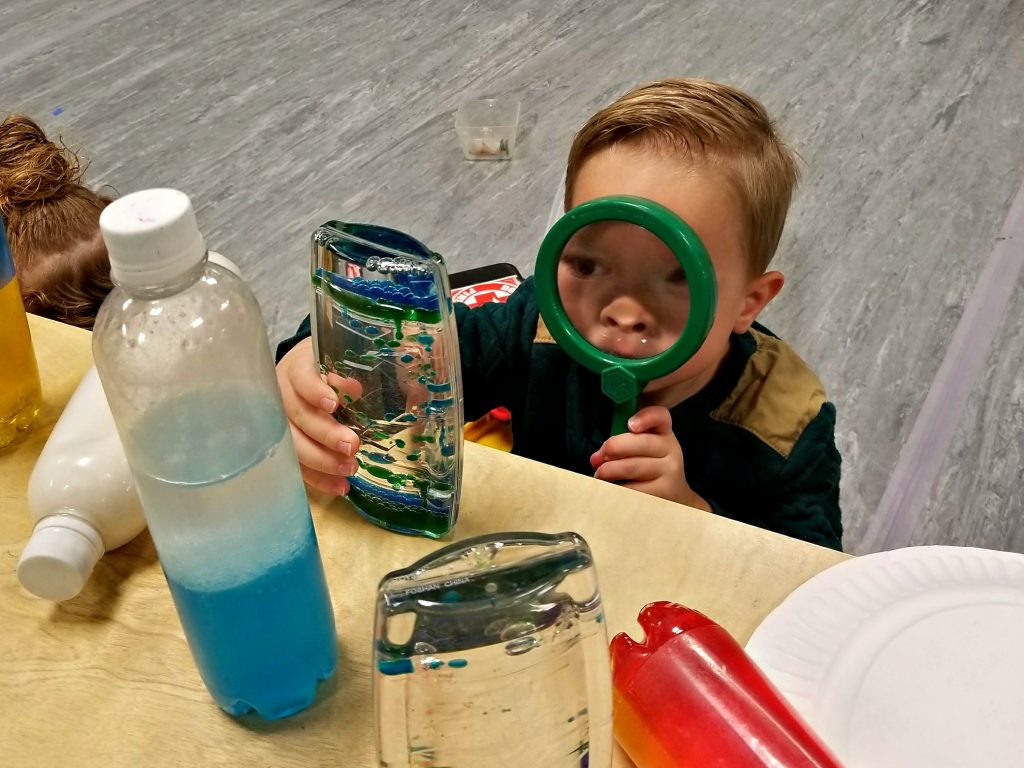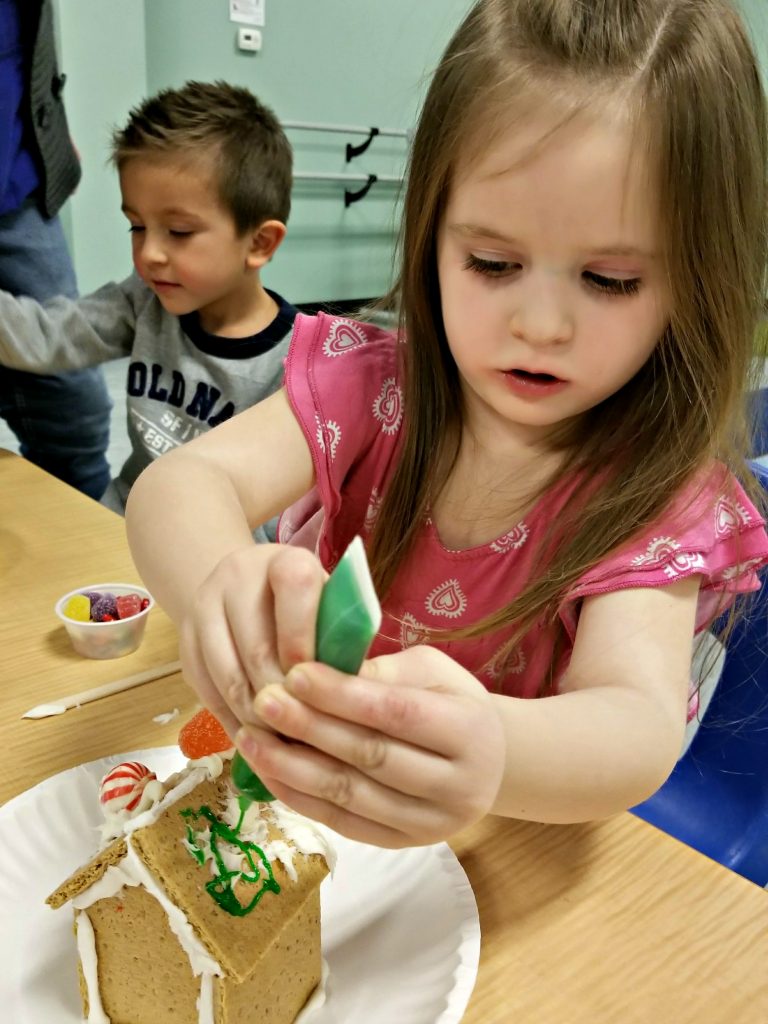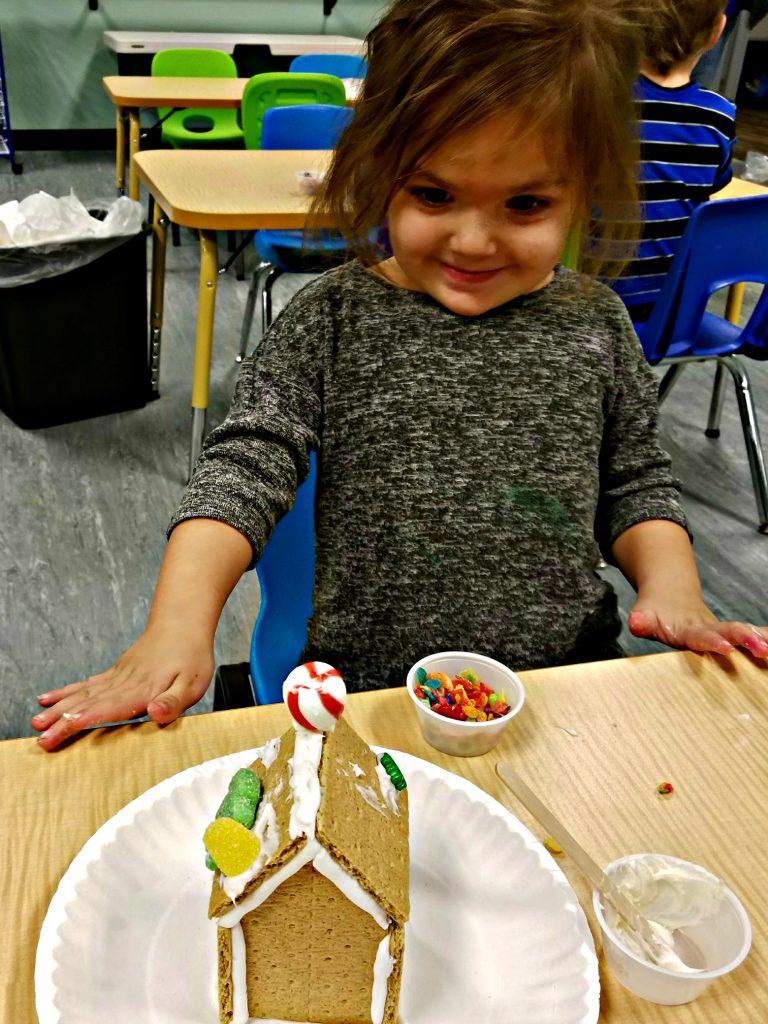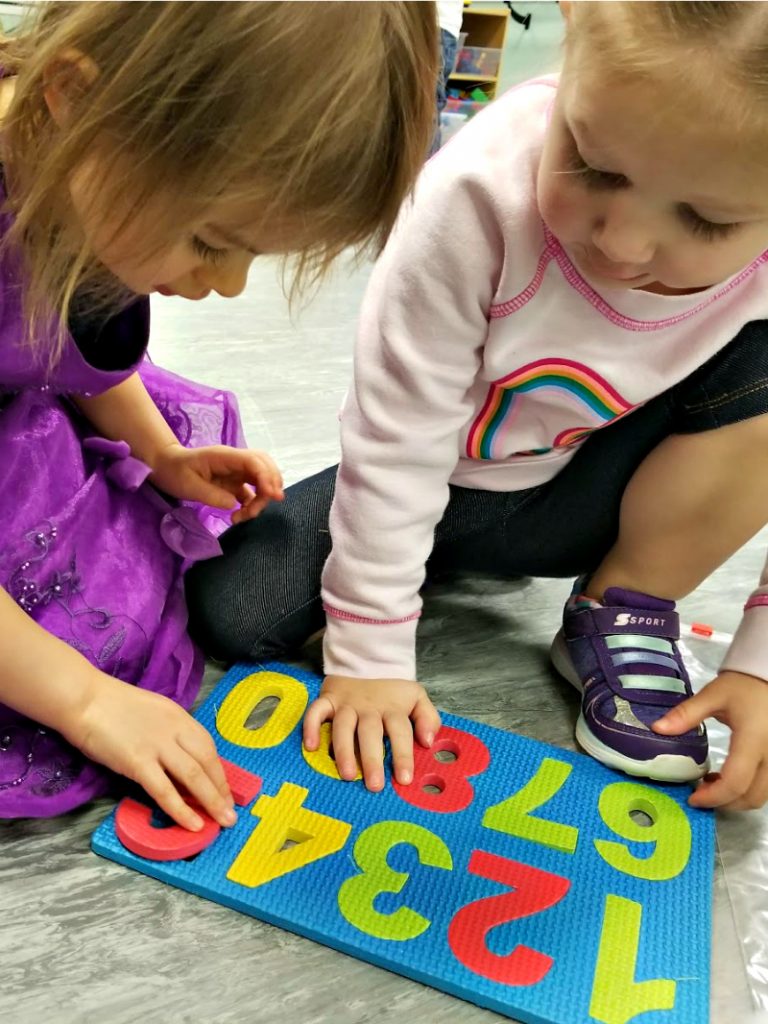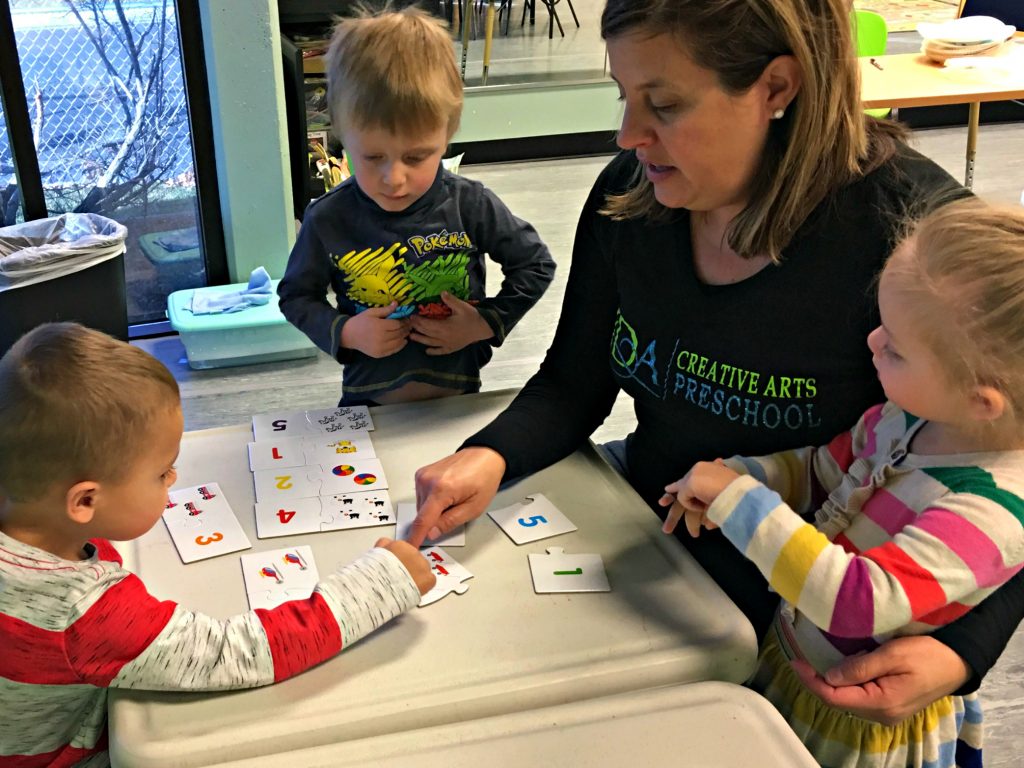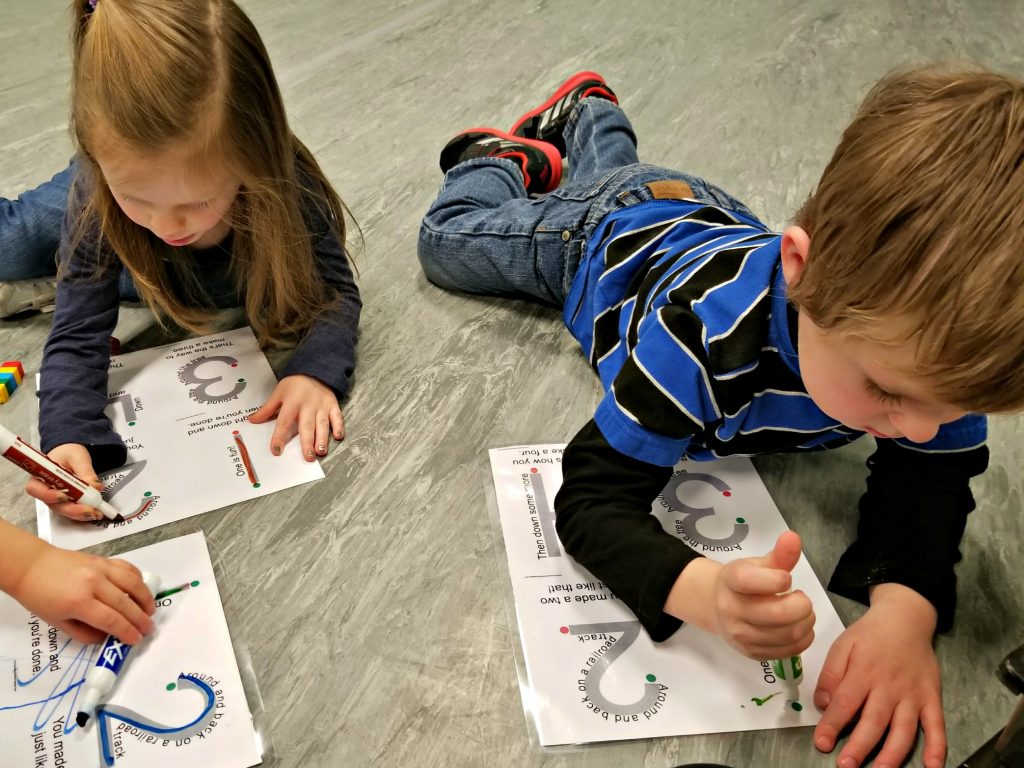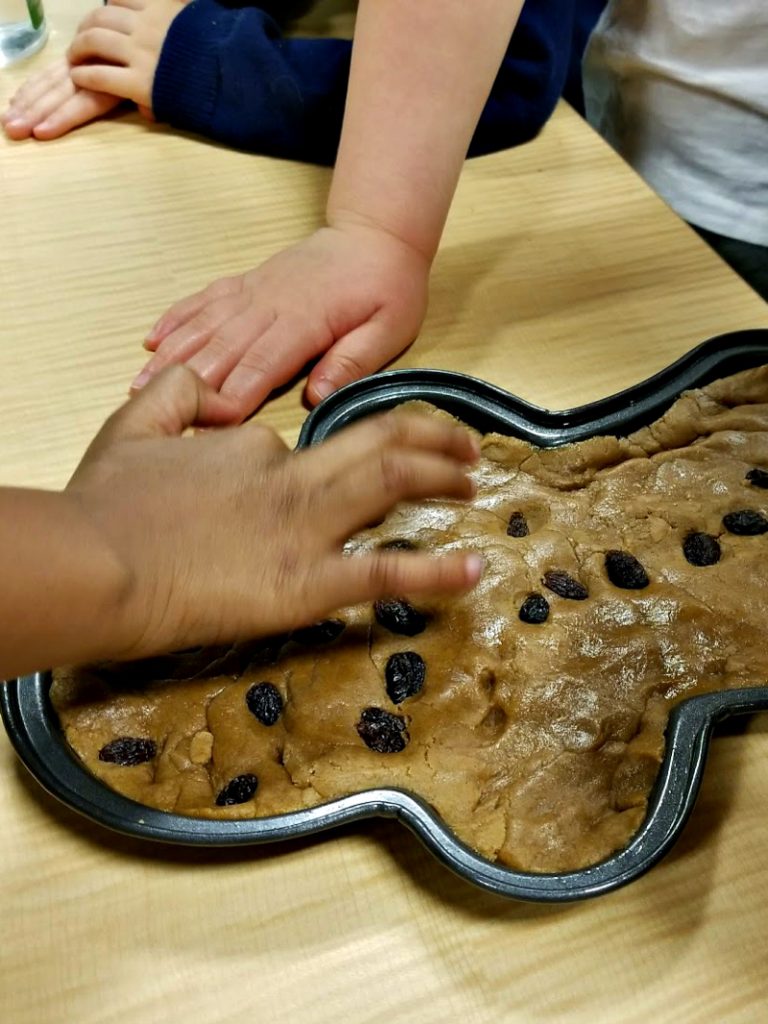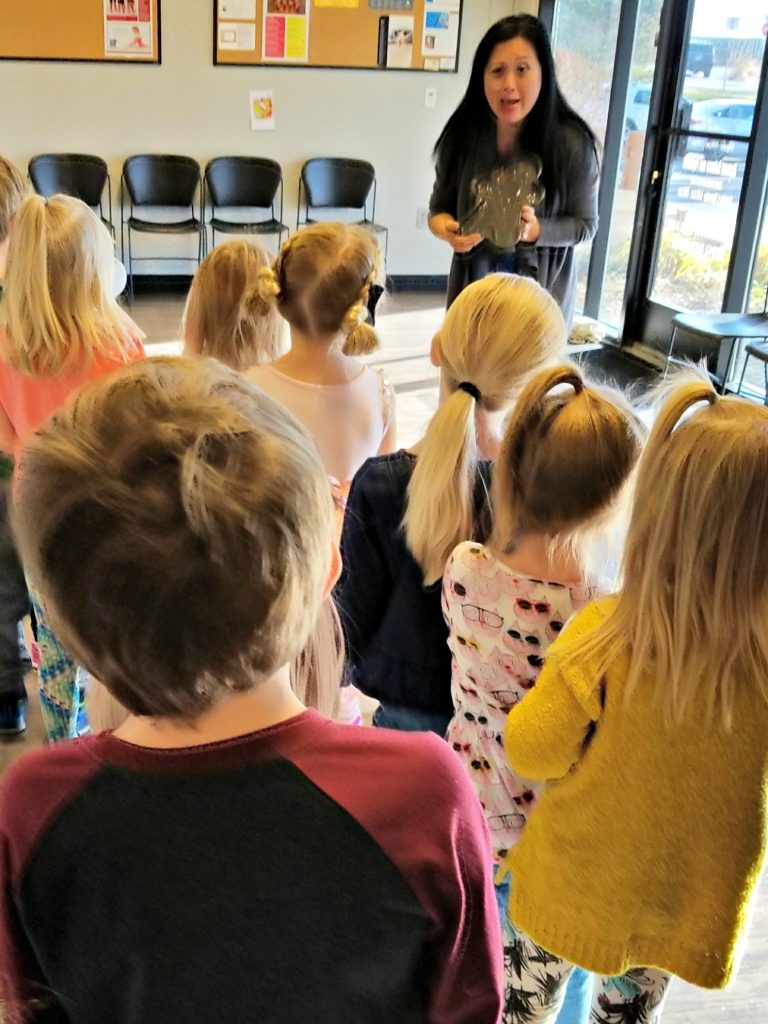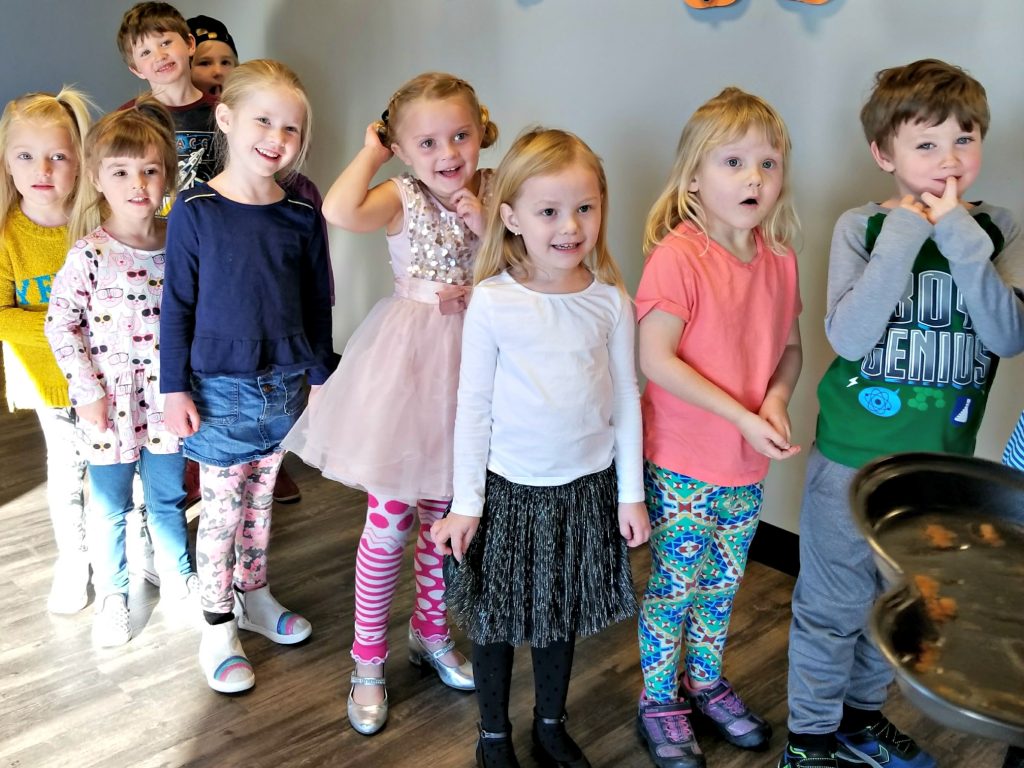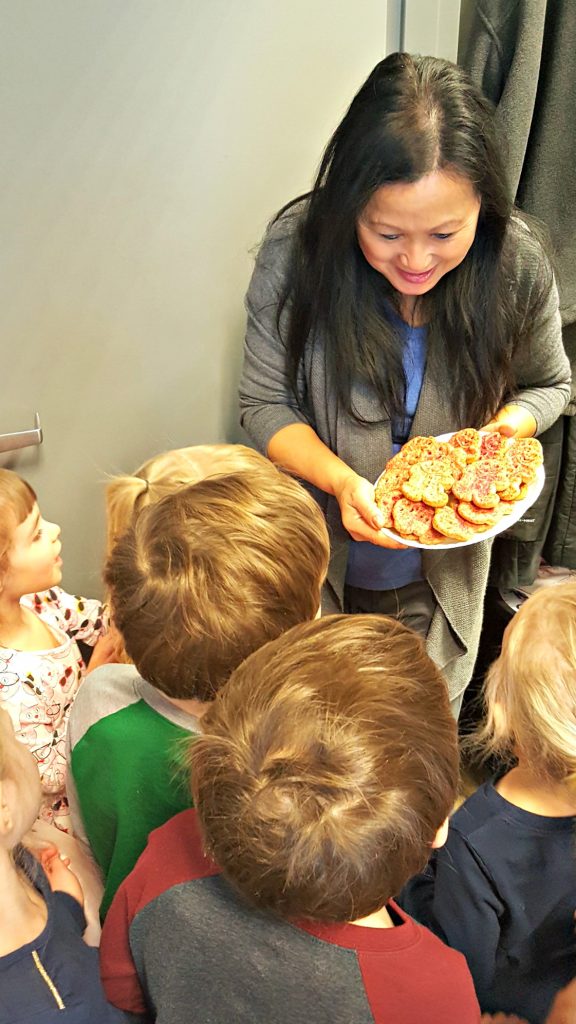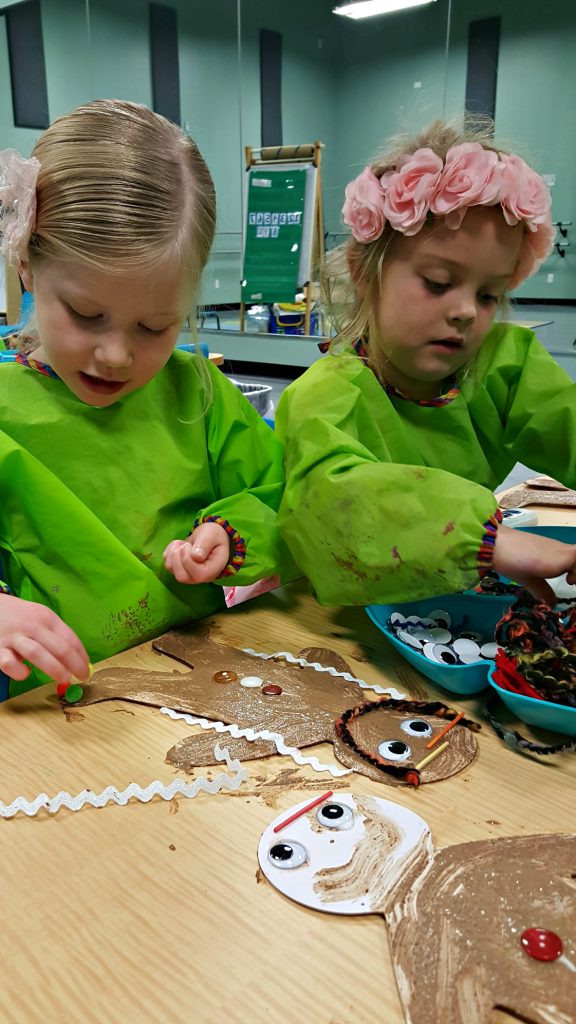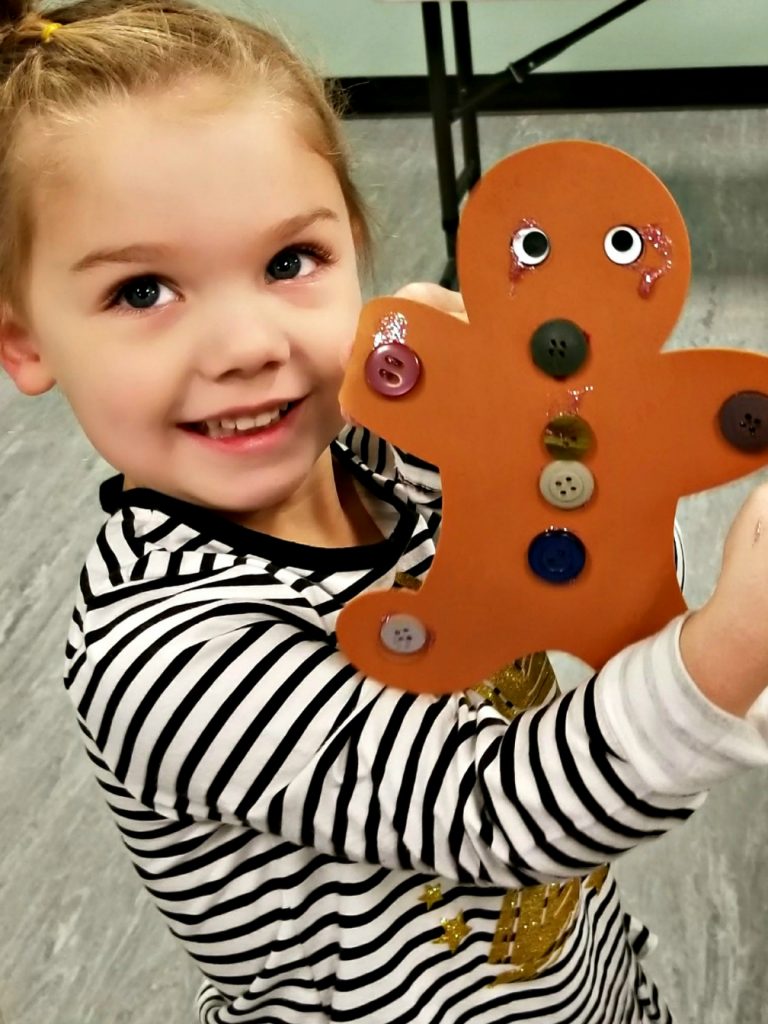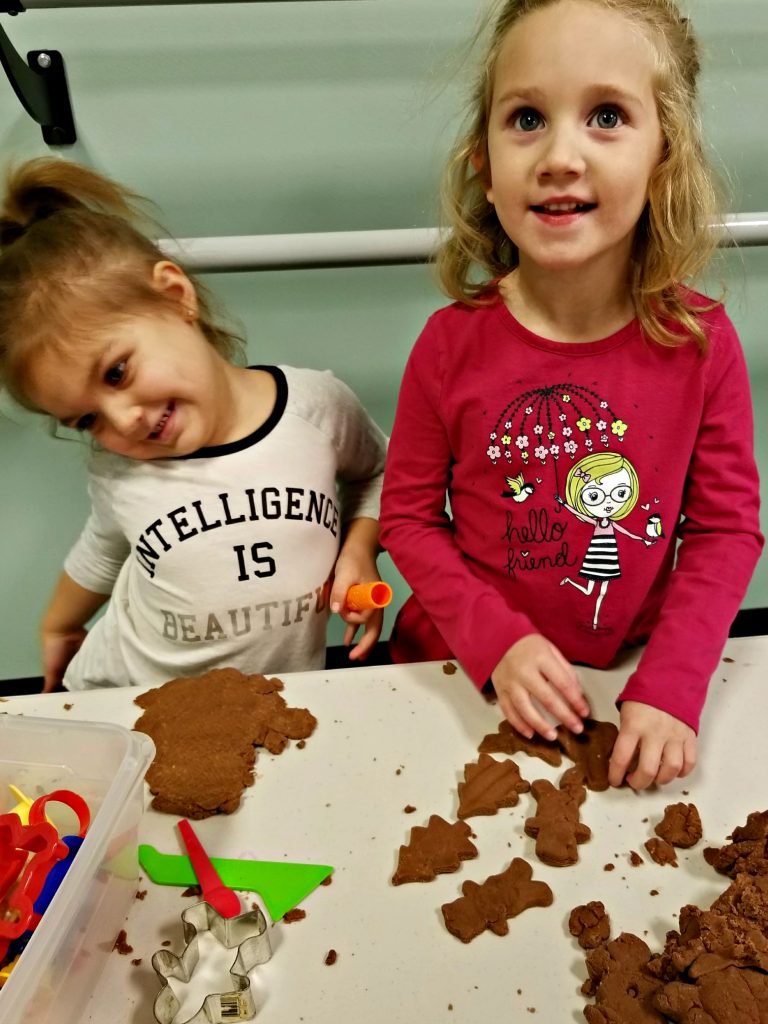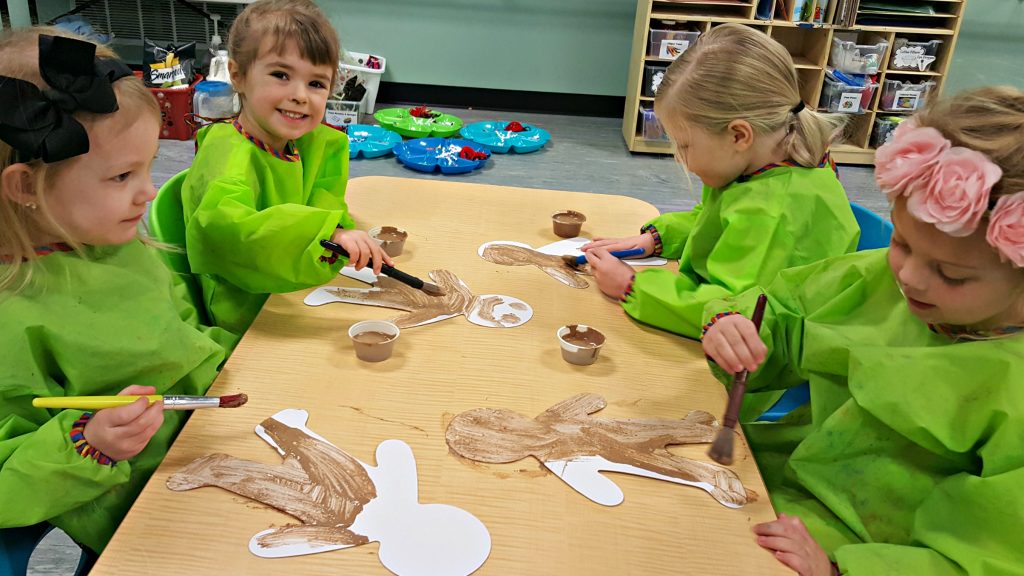The age-old story of the gingerbread man is one that has been shared across generations. But did you know that the gingerbread man teaches so much more than the speed of a cookie? At UDA Creative Arts Preschool, we put this animated fairytale to work as a theme for our integrated learning curriculum, and we can’t wait to share the results!
Integrated learning is helping children make connections across the disciplines, or topics, for learning. We cover math, science, culinary arts, engineering, reading, writing, art, music, and even a little drama. Those preschool minds worked overtime finding clues to locate that notorious disappearing gingerbread man! (Sorry kiddo, I don’t think that bobby pin is a cookie clue.)
Why is integrated learning important? Integrated learning allows children to learn in a holistic way, without creating boundaries between topics. This helps them see how all learning is interconnected and provides them with tools to explore and discover. We’d love to share some of the ways we do this and offer you some ideas for using integrated learning in your home as well!
The Power of Integrated Learning
Integrated Learning is Fun!
Call it frosting, call it art, or maybe even call it science and engineering. Decorating a gingerbread house is more than gluing candy. Children are learning about weight, gravity, and even balance.
And nothing can compare to the feeling of satisfaction that comes from mastering…that big peppermint on the ridge of the roof! Putting science into action can be fun and tasty!
Teaches Children to Transfer Knowledge to Other Settings
For our “Nn” week, we learned about numbers. We can learn math and numbers as we count and manipulate them in a puzzle.
Those numbers become more concrete as we attach them to objects that we can count.
Writing our numbers allows us to kinesthetically learn them.
And then, we can transfer that knowledge to our gingerbread man as we count how many raisins we use to create him.
Unfortunately, that’s where our trouble begins! After we worked so hard to make our gingerbread man, Miss Vicky put him in the oven for us. Why, oh why, didn’t someone watch him?
How could that infamous gingerbread man have escaped at our own preschool? (Poor Miss Vicky may have lost some credibility with the preschoolers. We all know he wants to escape! How could she not have kept a closer eye on him? )
Fortunately, that tricky gingerbread man left us a paper trail of clues. Time for some numerical application! The children were able to transfer their knowledge of math as they sequenced the numbered clues to find…
…the little gingerbread men left behind. Our big gingerbread man may have escaped, but at least he left some of his friends for us to consume. Phew, Miss Vicky’s reputation is saved!
More Connections = Higher Level Learning
Making gingerbread houses, cookies, and paint projects are fun, but they are also creating connections. So many of our connections stem from language and literature!
We were able to read several versions of the gingerbread man story. Each time the children heard it, they were able to repeat the lines spoken by the gingerbread man.
Run, run, as fast as you can. You can’t catch me! I’m the gingerbread man.
Repetition improves brain development, increases vocabulary, and reinforces memory and sequencing skills. Reading the same story to your preschooler over, and over, and over again may get old, but you are actually enhancing your child’s language development.
As we examine different versions of the gingerbread man story, the children are also able to make predictions, compare and contrast endings, and discuss emotions involved with the various conclusions of each story. This enables them to create connections to their personal experiences.
Creating Positive Attitudes for Learning
When integrated learning is practiced, children enjoy the learning process and positive attitudes are developed.
Throughout our gingerbread unit, children applied their creativity in the discovery room and through their art projects, while making connections to the stories we read. (You can connect at home with this pumpkin spice play dough recipe.)
When learning, be it math, science, or language, is fun, children can’t help but want to be a part of it. It is stimulating and interesting. Their brains are developing the way they were meant to. Children develop a positive attitude that shapes their learning for the rest of their lives.
Integrated Learning At Home
If you’d like to implement integrated learning with your preschooler. Here are a few suggestions to get you starated:
- Pick a topic. (Ants)
- Make a word web. This website has other great templates.
- Fill in the web with questions.
- Where do ants live?
- What do ants eat?
- What are the different kinds of ants?
- How do ants survive?
- As you begin to explore the topics, you will find other learning disciplines emerge. Help your preschooler make the connections.
- Math- How many ant species are there? How many ants in a colony? How many worker ants?
- Science- How do they make their homes? What factors effect the type of home they live in?
- Art- Your child can diagram or create ants and ant homes.
- Language- What do species and colony mean? How do I find a book about ants at the library? Read nonfiction books about ants. Find fun fiction books about ants.
The exciting part of integrated learning is that one topic leads to another. Ants can lead to insects. Insects spark questions on habitats. Habitats can begin a study on eco-systems. Learning is adventurous and develops curiosity!
We thoroughly enjoy applying integrated learning at UDA Creative Arts Preschool. If you would like to see what our theme of the week is, we encourage you to come in for a tour at our Draper, Utah facility by calling (801) 523-5930.
Written by: Elsje Denison


